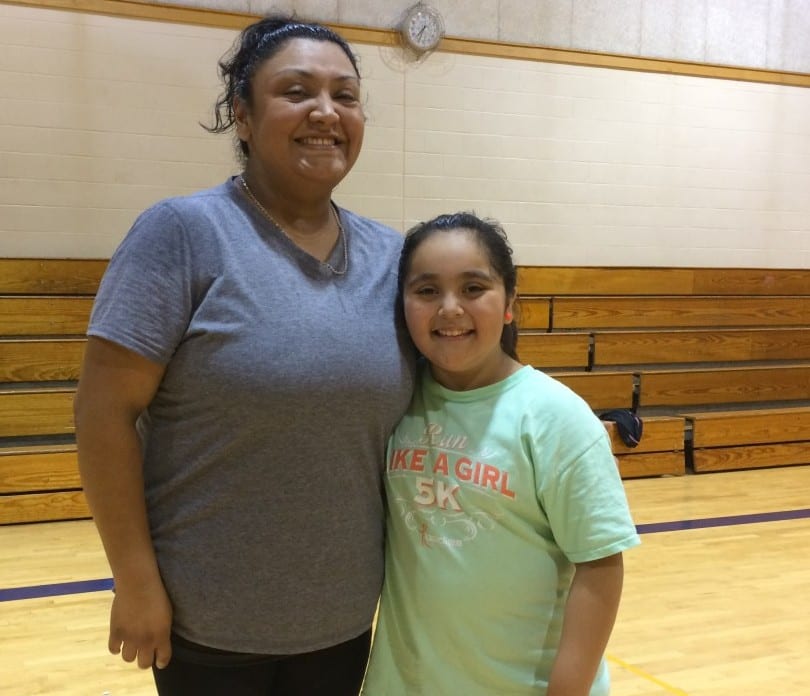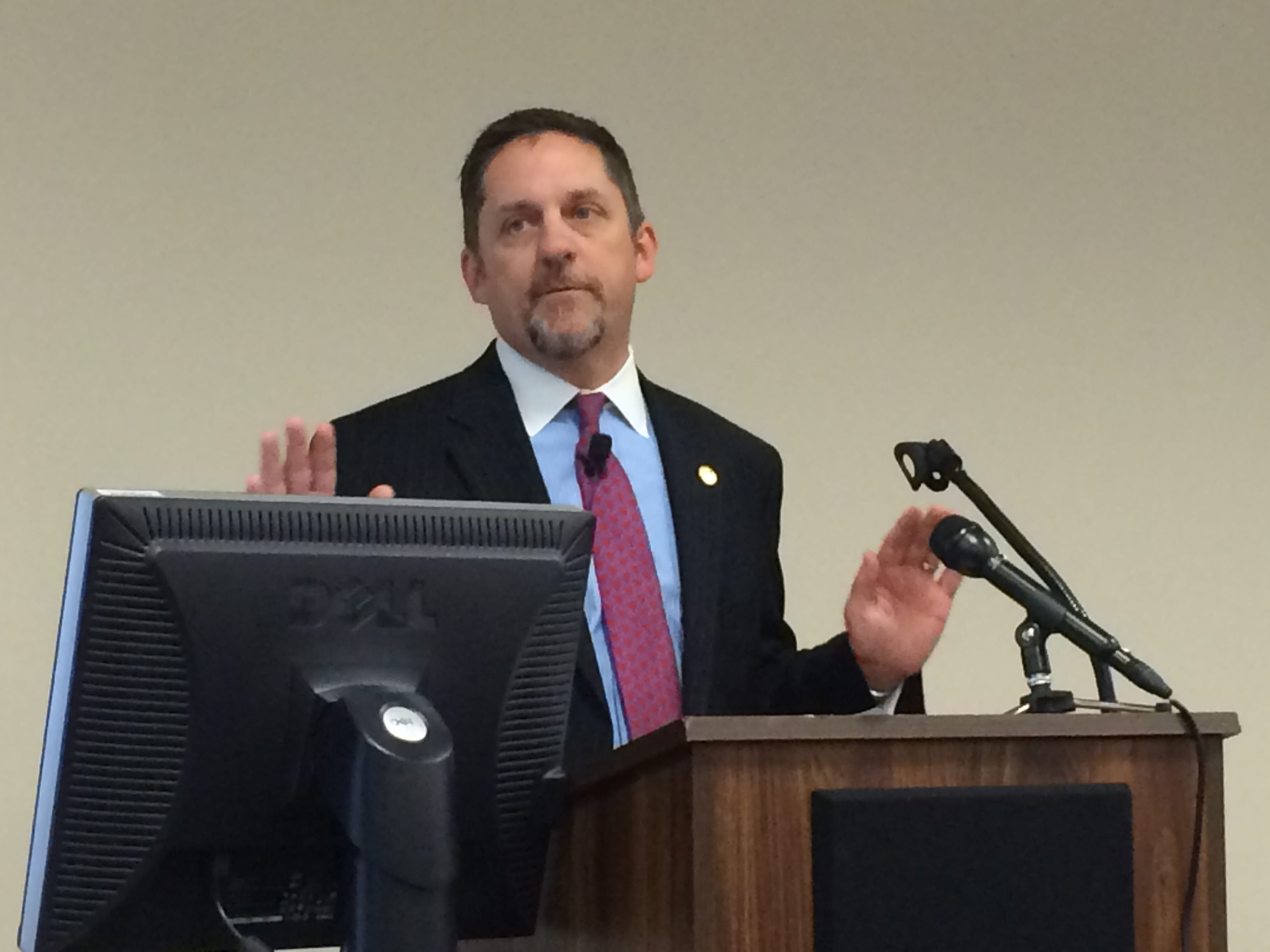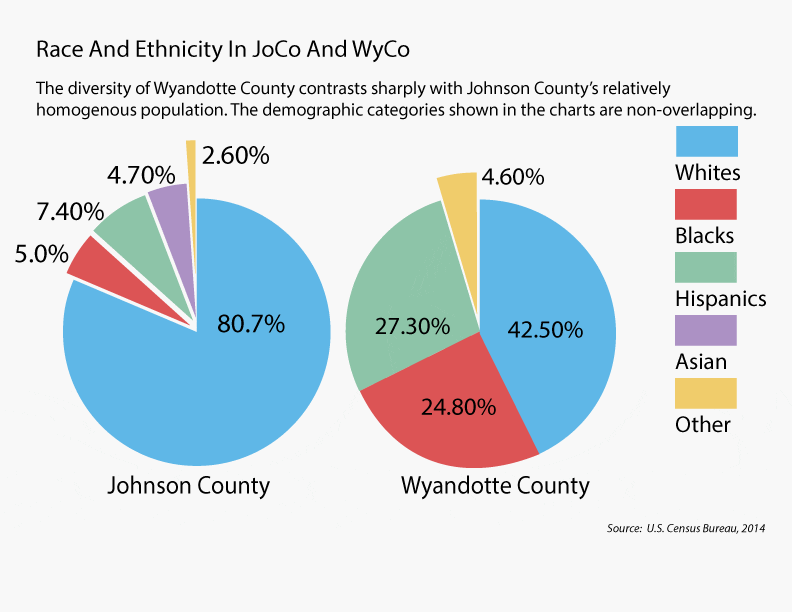Worlds Apart: When it comes to health, side-by-side Kansas counties are starkly different Crossing To Health Series, Part I
 Christina Moreno brings her daughter, Elena, with her to Zumba classes in the Argentine neighborhood in Wyandotte County to set an example of healthful activities. Click on the video for more ways Argentine, Kansas is working to stay healthy.
(Photo: Alex Smith |Heartland Health Monitor)
Christina Moreno brings her daughter, Elena, with her to Zumba classes in the Argentine neighborhood in Wyandotte County to set an example of healthful activities. Click on the video for more ways Argentine, Kansas is working to stay healthy.
(Photo: Alex Smith |Heartland Health Monitor)
Published January 11th, 2016 at 6:00 AM
At her home studio in Westwood, Kansas, yoga instructor Marilyn Pace leads a class of 5-to-8-year olds. With the help of songs, games and other kid-friendly teaching methods, she guides her small students through poses like the cobra, the triangle and the downward-facing dog.
Tatjana Alvegard takes her daughter, Kaya, to Pace’s classes regularly.
“I played sports when I was a kid, and I think it’s really important. It makes for a good, healthy adult if you learn discipline and you learn it’s good to take care of your body,” Alvegard says.
Not every Johnson County kid takes yoga, but residents here are a pretty fit group characterized by low rates of obesity and smoking, lots of physical activity and high life expectancies. So it’s no surprise that the Robert Wood Johnson Foundation ranks prosperous, well-educated Johnson County as one of the state’s healthiest counties year after year.
But just six blocks from the yoga studio – where Wyandotte County begins – the picture of health is different.
Patients on gurneys are lined up in the hall of the emergency room at The University of Kansas Hospital in Wyandotte County. Emergency department head Dr. Dennis Allin says that, besides handling emergencies, the staff here provides a lot of routine care for low-income patients seeking pain relief or just medication refills.
“A lot of this is, ‘But for the grace of God go I,’” Allin says.
It’s symptomatic of a community in distress, struggling with high rates of diabetes, obesity and heart disease, and one that Dr. Allin says is often misunderstood.
“These are not people that have just made bad choices, who just didn’t want to work,” he says. “These are people who are working hard. Is there some substance abuse? Is there some mental illness that goes into that lower-income population? Yeah, there is. But again, those are illnesses. And these people need our help.”
A County In Crisis
When the Robert Wood Johnson Foundation released its first county health rankings -based on factors that influence the health of a county – in 2010, Wyandotte County came in last for Kansas.
That was a time when the county appeared to be reversing decades of economic decline, thanks in part to the development of the Legends shopping center and sports arenas in western Wyandotte County.
But the rankings revealed a health crisis so severe that the county’s rebirth suddenly appeared to be more of a mirage.
“To be on that upward swing in terms of the county really feeling good about itself for the first time in a long time, to have these county health rankings come out – it was pretty discouraging,” says Mark Holland, a United Methodist pastor who was elected mayor and CEO of the Unified Government of Wyandotte County/Kansas City, Kansas in 2013.
Not only were the rankings a blow to the county’s self-image; the loss of productivity due to poor health and the cost to the county of treating large numbers of residents beset with chronic disease held out the prospect of hobbling economic growth indefinitely.
The shock triggered by the rankings led to an almost complete reset of priorities as the government, nonprofit groups, businesses, schools, churches and residents combined to take on what the rankings showed to be a full-blown health crisis.
It wasn’t long before farmer’s markets, nutrition programs, health fairs and new grocery stores started sprouting up throughout the county. Leaders gambled that residents would absorb the message and start taking their health into their own hands.
Promising Signs
Inside the Argentine Community Center on a Monday night, big beats rock the gym while dozens of neighbors follow an energized Zumba instructor. The free exercise and nutrition classes that started here about a year ago quickly filled up and a waiting list grew as long the class roster.
Kansas City, Kansas, native Christina Moreno says her family didn’t pay all that much attention to health when she was growing up. But as a participant in the Zumba class, she’s lost 54 pounds and now brings her 9-year-old daughter, Elena, along with her.
“I’m glad that I can get her involved and active and just trying to make her aware that Mom’s making healthier choices, and hopefully she’ll follow in my footsteps,” she says.
Wyandotte County’s health push is still in its early stages, but there are promising signs. Kansas City’s REACH Healthcare Foundation’s 2015 Regional Health Assessment showed rates of death from heart disease, cancer and diabetes on the decline.
Johnson County also has seen declines in death rates from heart disease and diabetes, although the incidence of cancer deaths has increased in the last 10 years.
Wyandotte County’s success has begun to draw admiring attention from health leaders in Johnson County. They include Lougene Marsh, the director of the Johnson County Department of Health and Environment.
“In many regards, I think Wyandotte County is ahead of Johnson County in really engaging their community at that grassroots level to begin to tackle some of these problems,” Marsh says.
But even as the various health initiatives in Wyandotte County can boast of success, emergency rooms continue to fill up. And as the health campaign expands, there are still reasons to think the county has a way to go before it can boast of health outcomes comparable to those in Johnson County.
Health experts say income and education are two of the biggest factors linked to good health, and those are two areas where the county sits at a big disadvantage.
Ultimately, leaders like Mayor Holland face a vexing question: Is it really possible to fix a county’s health without first fixing its economy?
“Fortunately, I was a philosophy major and we spent a lot of time on the chicken and the egg,” Holland says.
As Holland sees it, what ails Wyandotte County can’t be solved piecemeal. Instead, he says, it will require incremental improvements, which in turn will make residents more productive, which in turn will help boost the economy. And that will create a virtuous cycle leading to even more improvements in health.
“There’s no silver bullet to resolve these issues, but there is silver buckshot,” he says. “And every small thing that we can bring together and move it in the same direction in a common pattern – we can create a common impact that’s going to transform our community.”
This article was produced as a project for the Dennis A. Hunt Fund for Health Journalism and the National Health Journalism Fellowship, programs of USC Annenberg’s Center for Health Journalism.
Alex Smith is a reporter for KCUR, a partner in the Heartland Health Monitor team. You can reach him on Twitter @AlexSmithKCUR





